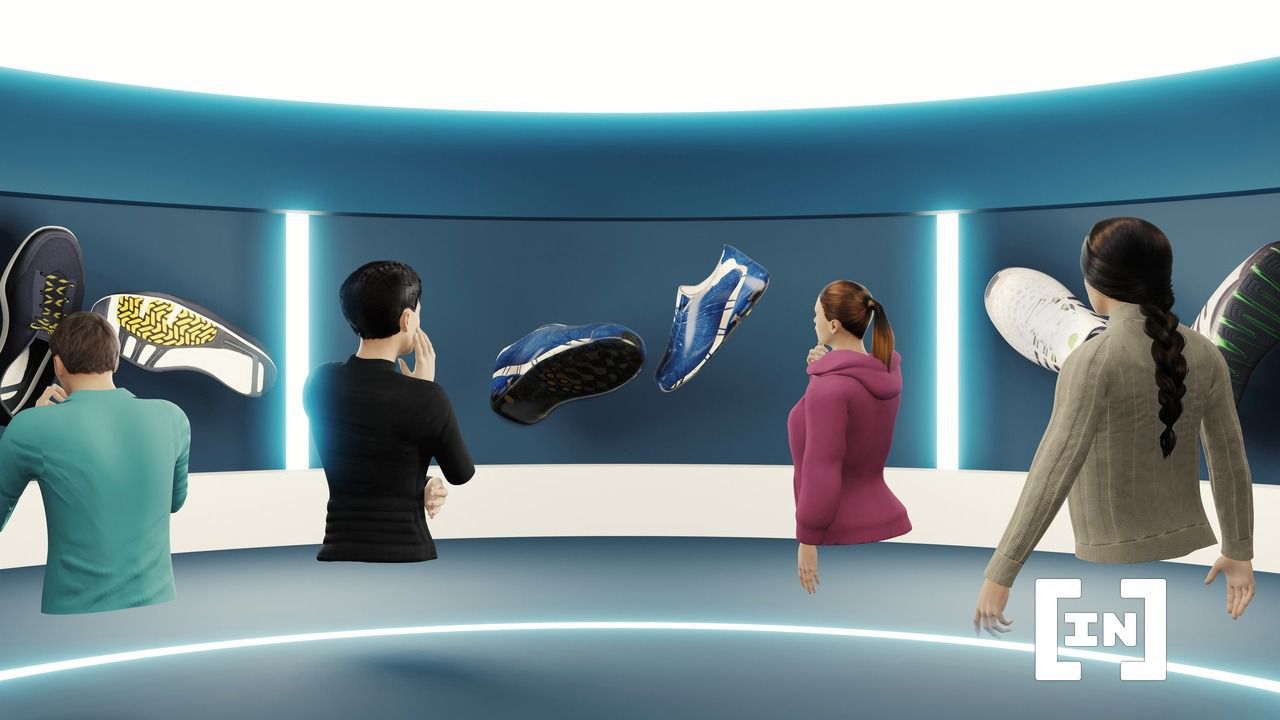
Selling in the Metaverse: Bring your products to life with Web 3.0 technologies
- Analysis
- May 15, 2022
In the Metaverse there are virtual showrooms that are available to you around the clock and 365 days a year. Now is the time to step in, says David Keane, CEO and co-founder of Bigtincan.
The rise of the Metaverse and Web 3.0 marks an exciting time for the future of sales enablement. Put aside your boring product displays and static training materials. Say goodbye to outdated sales portals and outdated LMS systems. Forget the ad hoc coaching approach from your old sales enablement textbooks. The evolution of digital innovations opens up a variety of groundbreaking opportunities for distributors.
Forbes and JPMorgan predict that the metaverse will gain a foothold in all major sales areas in the next few years. That, in turn, brings with it an annual profit potential of $ 1 trillion. And according to a recent report by KPMG Pulse, almost two-thirds of all consumers are now familiar with the Metaverse. And they are ready to use it for interaction with brands.
As the interaction between buyer and seller is increasingly digital, the buying experience of the future will take place in the Metaverse. Accordingly, B2B sellers need the right sales enablement tools and the right training to proactively address prospects in a virtual environment.
This is where enterprise-ready Web 3.0 technologies come into play. They enable sellers to offer impressive and personalized virtual shopping experiences. This in turn leads to intelligent purchasing decisions and brand loyalty.
The widespread hype surrounding the metaverse has turned it into a confusing phenomenon. From the point of view of the sales enablement, however, the concept behind it is surprisingly simple. It is a continuous virtual ecosystem where brands and customers can interact with each other through the use of augmented reality (XR) Web 3.0 technologies. These include, for example:
- Virtual Reality (VR): An immersive, fully rendered, digital environment that replaces a real-life environment.
- Augmented Reality (AR): An interactive experience in which digital content is superimposed on real environments.
- Mixed Reality (MR): A seamless blend of AR and VR, where physical and virtual environments coexist in real time.
Gartner predicts that one in four people will spend at least one hour a day in the Metaverse in the next five years. Either to work there, shop, educate or just entertain. In addition, 30% of global companies will have products and services ready for the Metaverse. The companies that are the first to recognize the potential of XR for sales enablement today will be the first to benefit from it tomorrow.

By integrating XR technologies into customer-oriented sales content, sellers can engage buyers interactively to achieve a deeper understanding. Instead of traditional sales content and product presentations that do not sufficiently inform customers, XR technologies bring the products to life. They include 3D models and immersive virtual displays that promote multisensory learning.
With AI-driven virtual showrooms, sellers can use AR and VR to create, manage and present sales content. This gives buyers the opportunity to interact with the products as if they were right in front of them.
Since the virtual showrooms are located in the Metaverse, they are available around the clock and 365 days a year. This allows buyers to learn at their own pace, when the time is convenient for them. The unsurpassed level of personalization and the intensive involvement of the buyer can help to simplify complex purchasing decisions.
In a similar area, Web 3.0 technologies can help companies develop virtual sales teams. This is possible with interactive training courses that are integrated into a sales platform. The sales team is then immediately ready for the sale. The MR-controlled 3D content essentially recreates the interaction with buyers that sales representatives will experience in the Metaverse. This allows you to practice the communication techniques and tactics that promote positive customer loyalty.

Each simulation is adapted to the individual seller and is tracked in real time. AI-controlled speech analysts evaluate the performance. Managers can then use the automated insights to offer personalized coaching and thus optimize professional development.
From the involvement of buyers through virtual product presentations to the coaching of sellers through interactive training content, XR tools offer added value for every company. They should be one of the indispensable components of every sales enablement platform. The metaverse is already visible on the horizon. Make sure your company is ready to take advantage of it.
About the author

David Keane is CEO and Co-founder of Bigtincan, one of the global leaders in sales enablement automation. With more than 20 years of experience in B2B and B2C technologies, Keane is on a mission to help global brands shape the buying experience of the future through AI-powered sales solutions. Through his vision and leadership skills, Bigtincan has helped to achieve a meteoric rise. From a start-up company in 2010 to a listed market leader who has achieved sales of over $100 million in 2021. Before Bigtincan, Keane founded Quadtel Asia in Singapore and Veritel Wireless in Australia. He also worked for the web startup Kgrind.com where he expanded and managed the company on three continents.
Originally from Australia, Keane received his bachelor’s degree in economics from the Australian National University and then completed his Master’s degree in Management at Macquarie University.
Disclaimer
All information contained on our website is researched to the best of our knowledge and belief. The journalistic articles are for general information purposes only. Any action taken by the reader on the basis of the information found on our website is done exclusively at his own risk.
